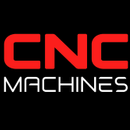How to Increase Machine Shop Profits: Strategies for Success

How to Increase Machine Shop Profits: Strategies for Success
Increasing profits in a machine shop is essential for sustainability and growth in today's competitive manufacturing environment. By implementing effective strategies, shops can optimize operations, reduce costs, and enhance customer satisfaction. This article outlines key tactics for boosting profits, including reducing machining cycle times, minimizing downtime, processing metal chip waste, optimizing cutting fluids, and ensuring timely delivery of parts.
1. Reduce Machining Cycle Time
Reducing machining cycle time is critical for increasing throughput and maximizing profits. Here are several effective strategies:
- Optimize Tool Paths: Utilize advanced CAD/CAM software to create efficient tool paths that minimize unnecessary movements. This not only speeds up machining but also reduces wear on tools.
- Utilize High-Speed Machining: Invest in high-speed machining technology and tools that allow for faster processing speeds without sacrificing quality. This can significantly reduce cycle times.
- Implement Lean Manufacturing Principles: Adopt lean techniques to streamline processes and eliminate waste. Regularly review workflows to identify bottlenecks and areas for improvement.
2. Minimize Downtime on Machines
Machine downtime can severely impact productivity and profits. To minimize downtime, consider the following:
- Preventive Maintenance: Establish a preventive maintenance program to regularly service machines and catch potential issues before they lead to breakdowns. This can include regular inspections, lubrication, and component replacements.
- Train Employees: Ensure that all operators are properly trained in machine operation and maintenance. Knowledgeable staff can quickly identify and troubleshoot issues, reducing the time machines are out of service.
- Invest in Technology: Use monitoring systems that provide real-time data on machine performance. This allows for proactive maintenance and reduces the likelihood of unexpected downtime.
3. Increase Productivity
To enhance productivity within the machine shop, implement these practices:
- Standardize Work Procedures: Develop standardized operating procedures (SOPs) for all tasks. This reduces variability and ensures that each job is completed efficiently.
- Employ Automation: Consider incorporating automated solutions, such as robotic arms for loading and unloading parts. Automation can significantly reduce cycle times and labor costs.
- Cross-Train Employees: Train staff on multiple machines and processes. This flexibility allows for better resource allocation during busy times and minimizes delays.
4. Process Metal Chip Waste Efficiently
Managing metal chip waste can reduce costs and enhance profits. Here are effective strategies:
- Implement Chip Recycling Programs: Set up a recycling program for metal chips. Work with local recyclers to ensure that waste is processed and sold, recouping some of the material costs.
- Utilize Chip Management Systems: Invest in systems that automatically remove chips from machines. Keeping machines free of debris can prevent operational issues and improve efficiency.
5. Maintain and Optimize Cutting Fluids and Tool Wear
Cutting fluids and tool wear management are crucial for maintaining productivity and reducing costs:
- Regularly Monitor Cutting Fluids: Keep cutting fluids at optimal levels and maintain proper concentrations. Regular monitoring can prevent issues like overheating and tool wear.
- Invest in Quality Tools: Use high-quality cutting tools that offer better durability and performance. Proper tool selection can lead to longer tool life and reduced costs.
- Track Tool Wear: Implement a tool management system to monitor wear rates and schedule timely replacements. This proactive approach can minimize downtime and improve part quality.
6. Best Practices for On-Time Delivery
Ensuring timely delivery of parts is essential for customer satisfaction. Consider these best practices:
- Create Realistic Production Schedules: Develop production schedules that account for machine capacity, employee availability, and lead times. Avoid overcommitting to prevent delays.
- Utilize Project Management Tools: Implement project management software to track orders, deadlines, and resources. This enhances visibility and helps manage customer expectations.
- Communicate with Clients: Maintain open lines of communication with clients regarding project timelines and any potential delays. Proactive communication can help manage expectations and improve customer relationships.
Additional Tips for Cost-Cutting and Efficiency
- Review Supplier Contracts: Regularly assess supplier contracts for materials and services. Negotiating better terms can lead to significant cost savings.
- Optimize Inventory Levels: Maintain optimal inventory levels to reduce carrying costs. Implement Just-in-Time (JIT) inventory practices to ensure materials arrive as needed without excess.
- Foster a Culture of Continuous Improvement: Encourage employees to suggest improvements and share ideas for increasing efficiency. A culture of continuous improvement can lead to innovative solutions and cost reductions.
Conclusion
Increasing machine shop profits requires a multi-faceted approach focused on reducing machining cycle times, minimizing downtime, optimizing processes, and ensuring on-time delivery of parts. By implementing these strategies, machine shops can enhance productivity, reduce costs, and improve customer satisfaction, ultimately leading to a more profitable operation. With continuous improvements and a commitment to excellence, machine shops can thrive in an ever-evolving manufacturing landscape.


